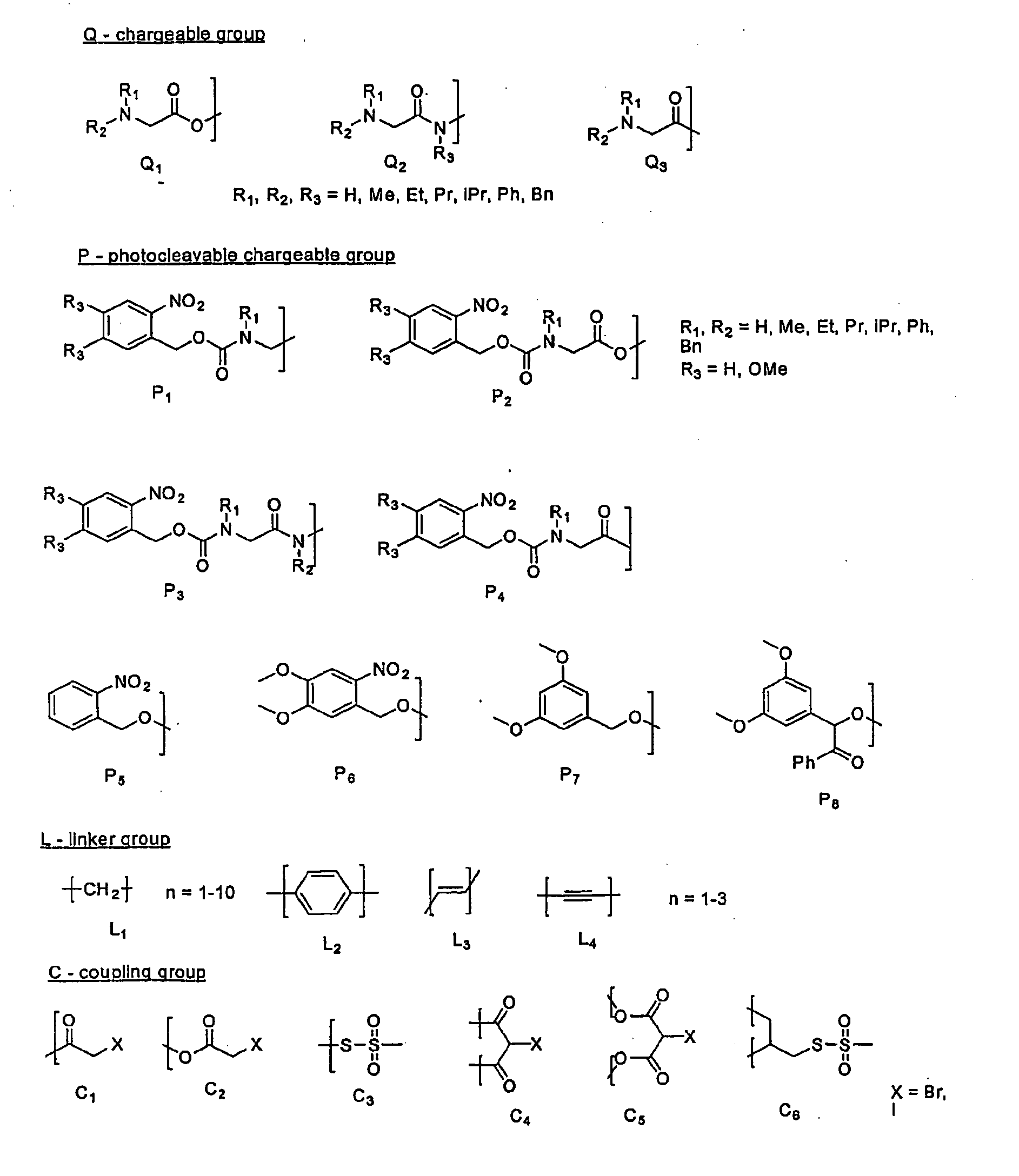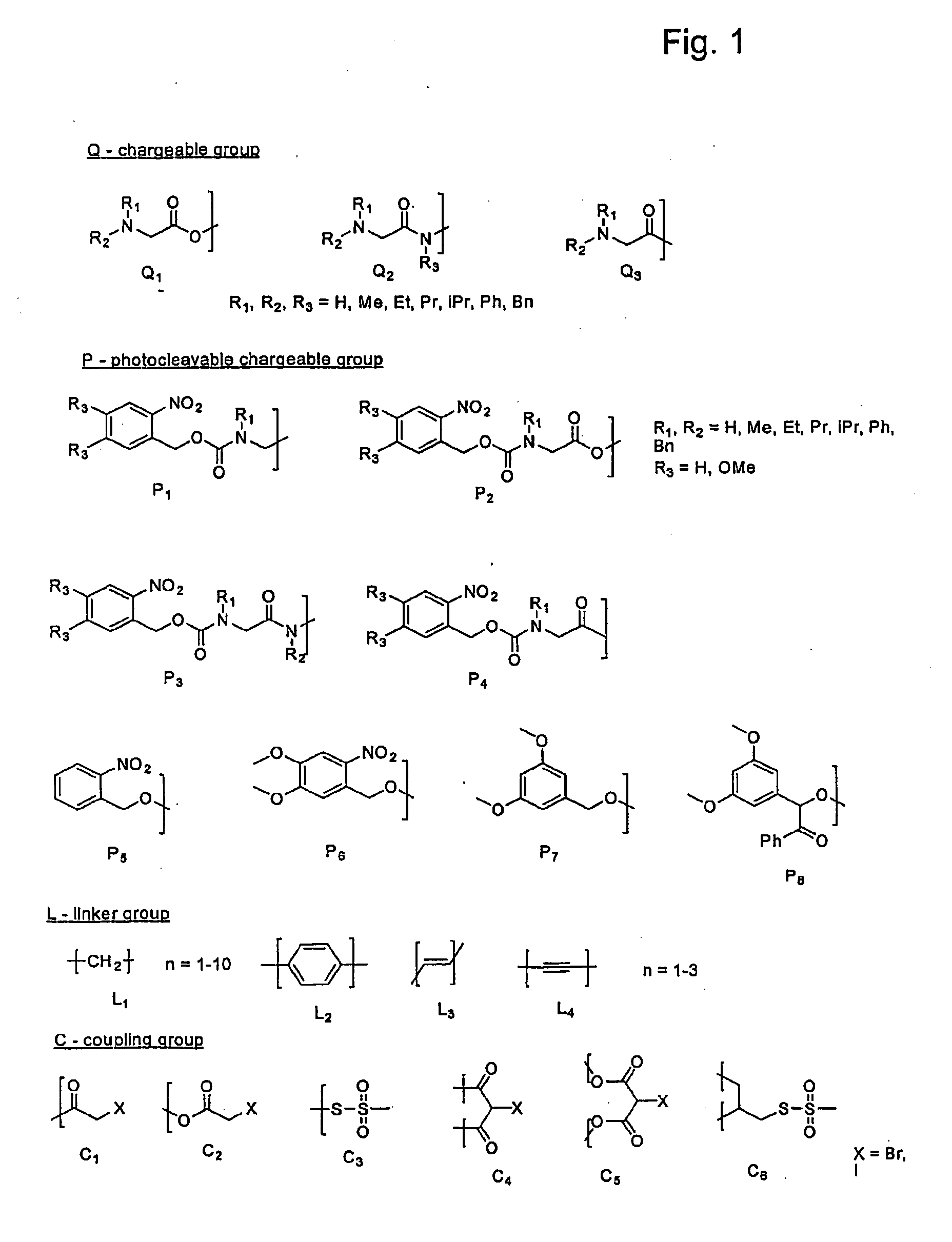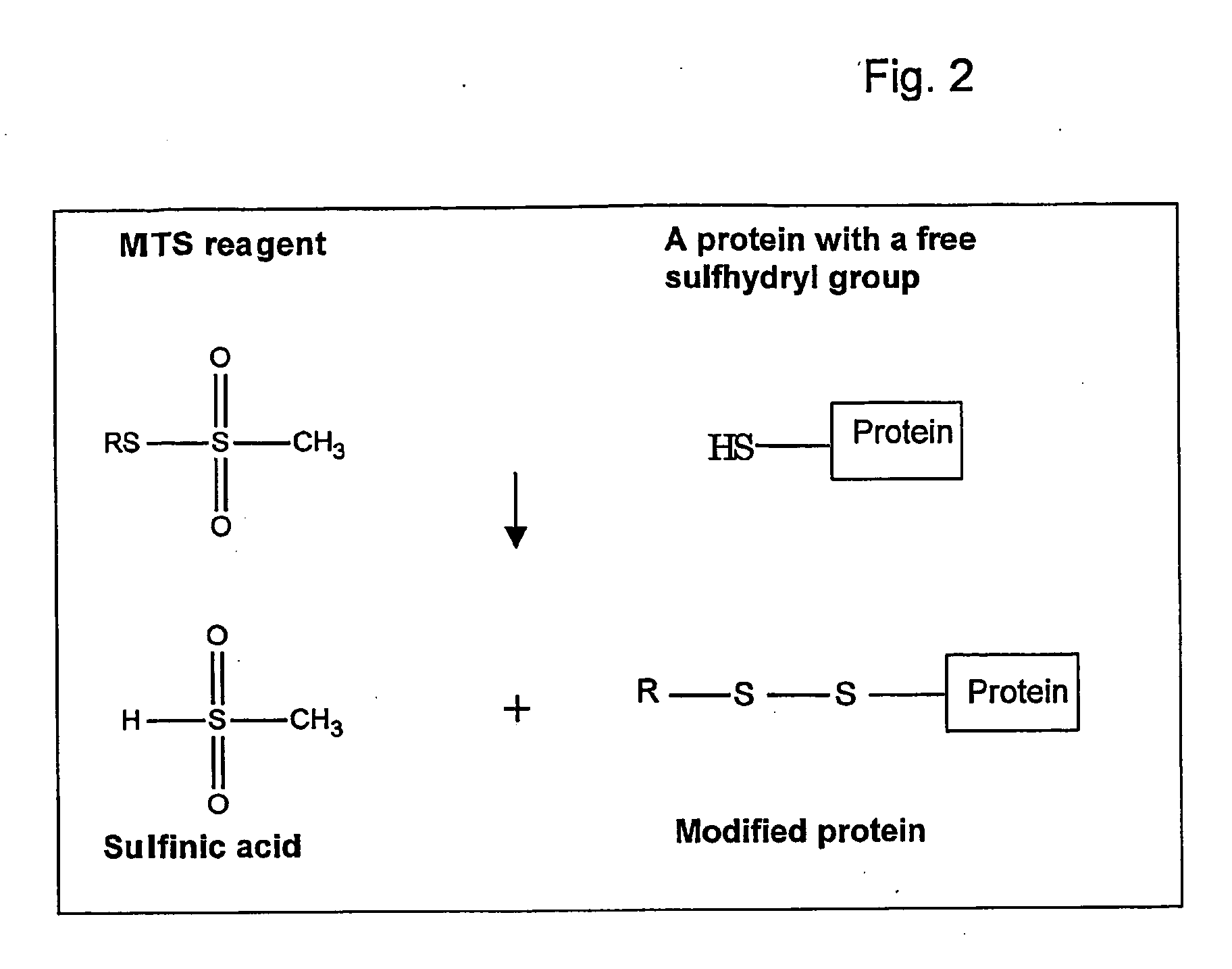Modified MscL protein channel
- Summary
- Abstract
- Description
- Claims
- Application Information
AI Technical Summary
Benefits of technology
Problems solved by technology
Method used
Image
Examples
example 1
Synthesis of pH- and Light-Responsive Compounds
[0042] Methylthiosulfonate (MTS) derivatives react very rapidly and specifically with cysteine sulphydryls and introduce the functional group into the protein. The sulfinic acid by-product of the reaction decomposes rapidly to low-molecular-weight volatile products, which do not, in general, affect the stability of the disulfide bond formed or the activity of the enzyme. This example shows the synthesis of both pH- and light-sensitive MTS-based compounds.
[0043] A. General Synthesis of the pH-Responsive Compounds
[0044] Material and Methods
[0045] The schematic presentation of the compound synthesis is given in FIG. 4. In the first reaction, glycine or its N-alkylated derivative (1) in the form of the free compound or as a HCl salt (20 mmol), was suspended in 2-bromoethanol (14.3 ml, 200 mmol) and cooled to 0° C. Thionyl chloride (1.8 ml, 25 mmol) was added dropwise and reaction mixture was stirred at room temperature until a clear sol...
example 2
Chemical Modification of the MscL Channel Protein
[0058] All synthesized compounds were attached to the MscL protein from E. coli via cysteine modification. In this example, the 22nd position of the protein was mutated to a cysteine.
[0059] Material and Methods
[0060] A membrane pellet fraction was obtained from a fermentor culture of E. coli pB104 cells containing the plasmid PB104 carrying the MscL(G22C)-6His construct. MscL was isolated to near homogeneity via a single nickel-nitriloacetic acid (Ni-NTA) metal-affinity chromatography step.
[0061] One volume of isolated detergent-solubilized MscL (0.3 mg / ml) was incubated with 0.5 volume of 160 mM compound (A-C) for 15 minutes at room temperature. The protein modification reaction was stopped and the excess label was removed by applying the sample into a gel filtration column. The protein concentration of elution fractions was determined by Bradford Assay.
[0062] The modified protein was reconstituted in synthetic lipid membranes i...
example 3
Functionality of a Modified MscL Channel Protein
[0065] Proteoliposomes containing modified MscL protein were analyzed by a fluorescent dye efflux assay. The activity of the channel was measured as an increase in the fluorescence of a reporter molecule, the dye calcein. Calcein is included in the liposome interior at a self-quenching concentration, but when the calcein escapes into the exterior medium, the dilution is such that quenching is completely abolished.
[0066] Materials and Methods
[0067] The schematic presentation of the efflux assay is given in FIG. 7. During reconstitution of the protein into the mixture of synthetic lipids in the presence of a detergent, a self-quenching dye, calcein, is also added into the mixture to a final concentration of 50 mM. After the reconstitution is completed by the removal of the detergent, the calcein-containing liposomal fraction was separated from the unencapsulated free calcein by passing the sample through a Sephadex G50 size exclusion ...
PUM
| Property | Measurement | Unit |
|---|---|---|
| Composition | aaaaa | aaaaa |
| Therapeutic | aaaaa | aaaaa |
Abstract
Description
Claims
Application Information
 Login to View More
Login to View More - R&D
- Intellectual Property
- Life Sciences
- Materials
- Tech Scout
- Unparalleled Data Quality
- Higher Quality Content
- 60% Fewer Hallucinations
Browse by: Latest US Patents, China's latest patents, Technical Efficacy Thesaurus, Application Domain, Technology Topic, Popular Technical Reports.
© 2025 PatSnap. All rights reserved.Legal|Privacy policy|Modern Slavery Act Transparency Statement|Sitemap|About US| Contact US: help@patsnap.com



